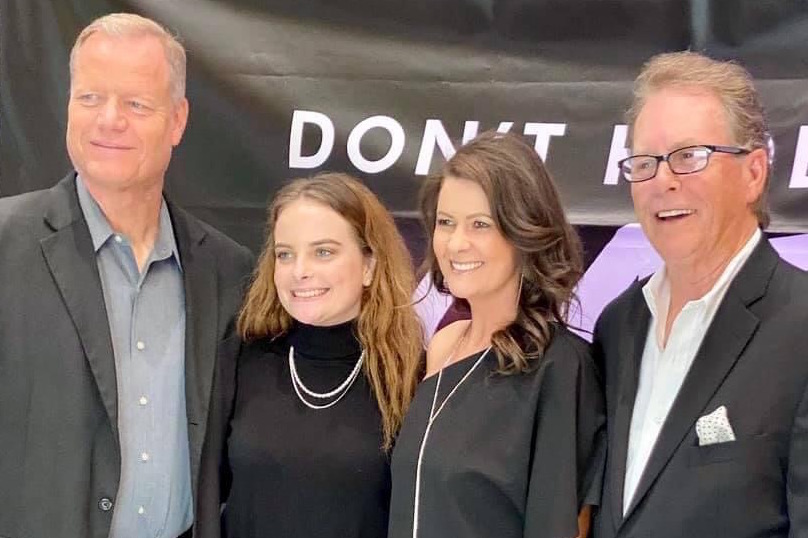
From left, Darren Redmond, Holly Clark, Virginia Castro and Flindt Andersen, make up part of the team at PAIN. Photo contributed
Written by Breanna Hardy
A local nonprofit’s self-produced documentary sold out its showings at Maya Cinema while spreading the message about the dangers of fentanyl and opioids.
Fresno nonprofit PAIN – Parents & Addicts in Need – has been sharing educational messages since 2009 about the opioid crisis in the Central Valley.
“We’ve been yelling this at the top of our lungs for all of these years,” said President and CEO Flindt Andersen.
The response to “Don’t Hide the Scars” came in a load of emails and phone calls after its Nov. 4 and Nov. 9 showings. While it’s not yet available to rewatch, the trailer can be found here. The 30-minute documentary was a plea for change as adolescents increasingly fall victim to drugs that are laced with fentanyl, which has the capacity to kill a person within 15 minutes.
“It can happen to anybody,” said PAIN Executive Director Darren Redmond.
Drug dealers are lacing everything with fentanyl, he said, including marijuana and cocaine. The powerful opioid painkiller comes in white powder form, with drug dealers making fake pills with unmeasured and unregulated amounts. The drug is known to be many times more powerful than heroin, but now often appears mixed with several other drugs, Redmond said.

The documentary was created as an encore to PAIN’s podcast, started two years ago, where people share stories about substance issues. Since the creation of the podcast, both the affected and the curious have asked for more information. The demand led to the creation of the half-hour show with plans for more. The collection of several planned documentaries will fit the mold of a full-length documentary.
PAIN has already begun pitching it to streaming services including Netflix.
Andersen said it was time for the cities of Clovis and Fresno to get the real story about what’s happening in the Valley.
“You don’t normally hear about kids dying in their bedrooms 12 feet from their mother and father’s bedroom,” Redmond said.
But with fentanyl overdose, families are experiencing this tragedy. Both Redmond and Andersen say that if no action is taken, the Central Valley will continue to see lives lost.
These are not homeless people, he said, but rather people who live north of Shaw Avenue. Sometimes there’s a misconception that these drugs fall within economic boundaries or a limited number of zip codes, but anyone can fall victim, Andersen said.
“This film was made in order to get the message out that this stuff is here. It’s here to stay,” Andersen said. “This is the result of what happens when somebody falls into that addiction trap.”
While several community leaders are listening and vowing to educate parents and teachers, he said it’s too bad that so many people have had to die before the community really started getting involved.
Fresno County District Attorney Lisa Smittcamp is featured in the documentary, and Andersen said several law enforcement officers have participated in the efforts to stop teens from dying.
A few schools have recognized that it’s an issue, but they didn’t want to admit it. Now they have to admit it, he said.
Andersen and Redmond advocate for more laws and policies, including not making a drug sale a misdemeanor. While they believe stricter punishments need to happen, community leaders have the responsibility to educate parents, teachers and teens in the meantime.
Narcan is an antidote to fentanyl that can be administered on the spot when someone is overdosing. The drug buys time to get the patient to the hospital and fentanyl is cleared from their system. PAIN is one of the main distributors of the antidote in the Fresno area. It is free to pick up.
While Narcan is effective, it’s not the whole solution, Andersen said. When fentanyl is cleared from a patient’s system, it still leaves an unsatisfied craving for the deadly drug.
“You have not solved any problems here other than saving one’s life,” Andersen said.
Their next big push in part two of the documentary will be “what’s next” for the person after they’ve been saved from an overdose. The documentary is slated for summer 2022 release.
“There’s still miles to go, let’s put it that way,” Andersen said.








